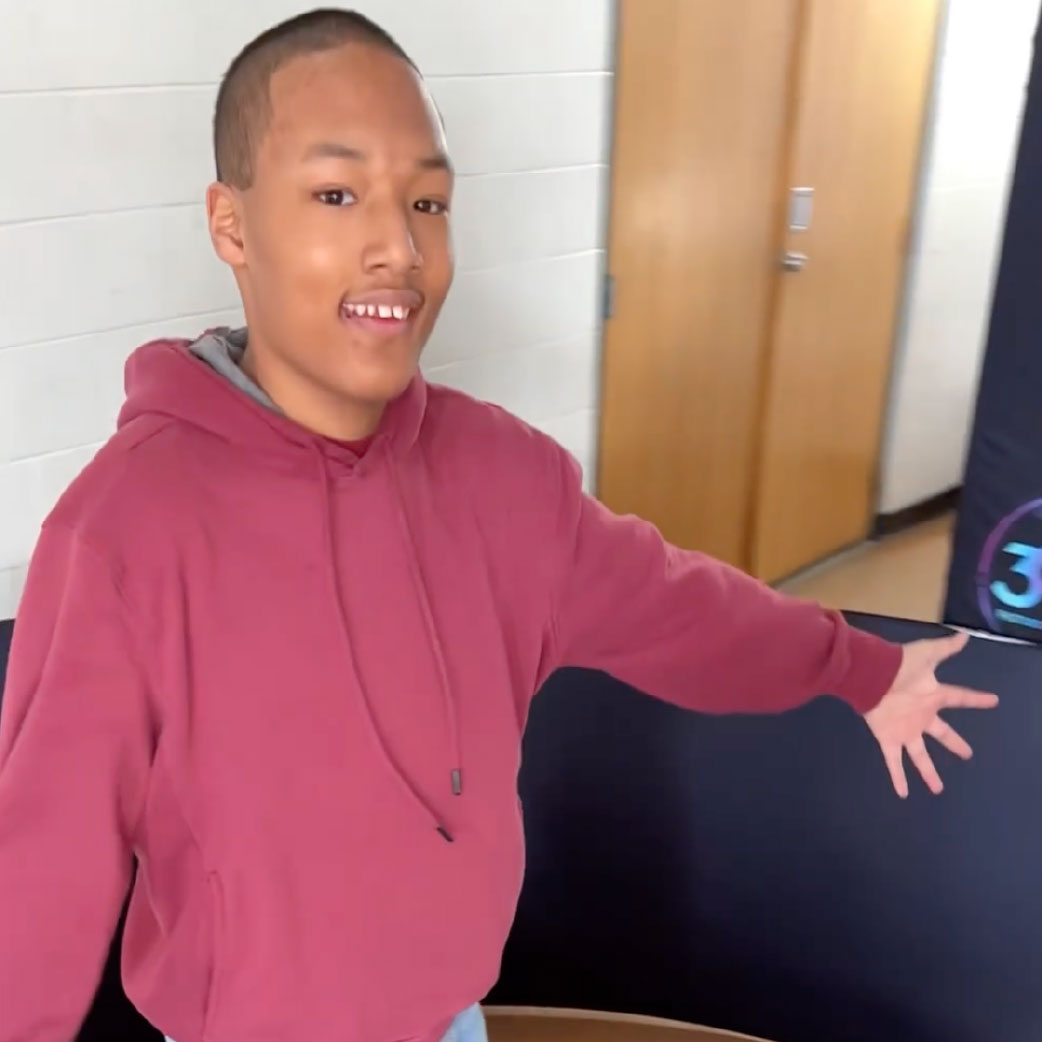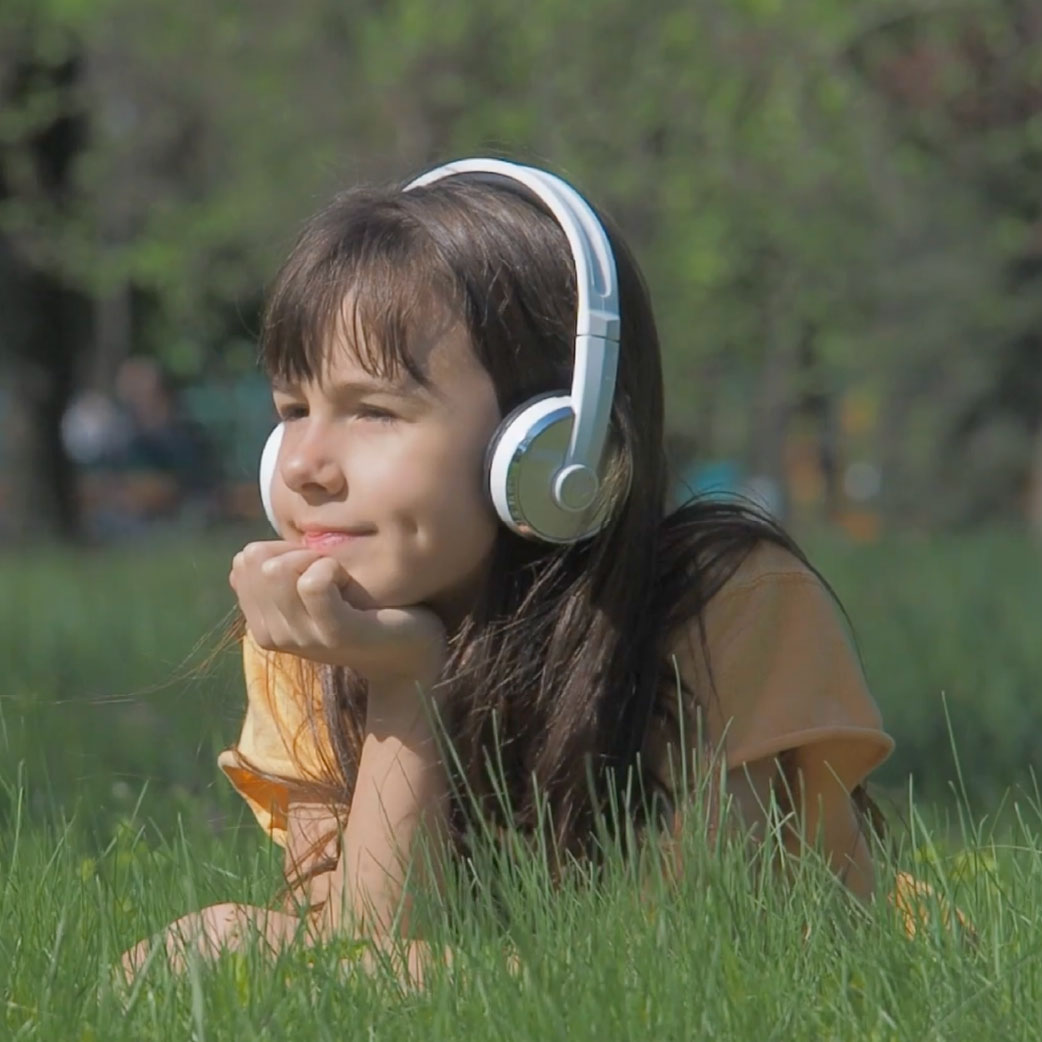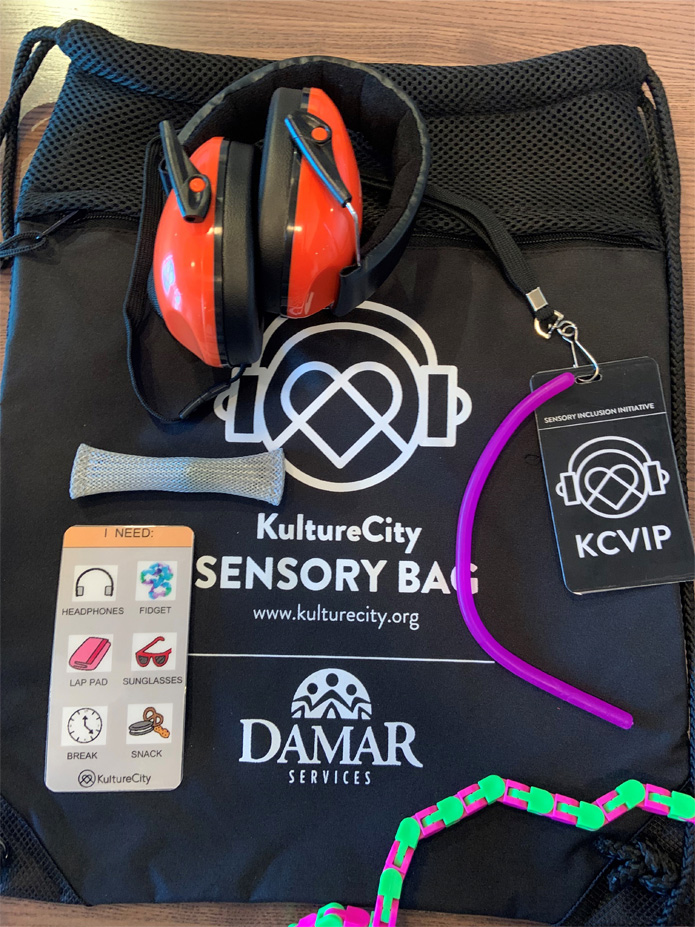
Filter Out the Noise and Stereotypes

You Run. So Do I.
For kids with autism, exploring is an urge, and they often don’t realize when they run away. Click here for more information.
You Clap. I Flap.
For kids with autism, flapping behaviors can be associated with unmet sensory needs. Click here for more information.


You Tune In. I Tune Out.
For people with autism, sensory overstimulation makes it difficult to filter out the noise. Click here for more information.
You Rock. I Do, Too.
For individuals with autism, rocking motions are often used as a way to relieve stress. Click here for more information.


Sensory Wall
Damar’s Sensory Wall at Victory Field provides a calming, interactive space for individuals with autism and other sensory needs. Featuring a variety of textures, colors, and activities, it provides multiple ways for individuals to satisfy the need for calming.
Additional Resources
Sensory Inclusive Guide
to Victory Field

-
Tips for Caregivers
-
Tips for Fans
- Come prepared – Prepare for the outing like you would any other! Bring along anything your child might need to feel comfortable enough to enjoy himself or herself.
- Collaborate with other caregivers – When attending an event with a group, each individual may have different needs. While one person may enjoy the whole game, another could need a break halfway through. Work with other caregivers whenever possible in cases like this to set something up so everyone can have a positive experience!
- Give feedback – Let venues like Victory Field that offer accommodations know that you appreciate what they’ve done and provide tangible examples of how you enjoyed the visit. If you have constructive criticism, share it. But, most of all, say thanks!
- Every child is unique – The ways that autism manifests vary widely from person to person; the challenges of someone with the disorder are as unique as they are.
- Understand sensitives – Children with autism may experience severe reactions to sensory stimuli like lights and sounds, including crowds like those at Victory Field! Allow them to get a quick break if needed and then go back to enjoying the game.
- Display openness – If you encounter a child with autism, giving an open facial expression to show acceptance can bring comfort to both the caregiver and child!
- Take cues from the caregiver – It’s okay to ask the caregiver of a child with autism if there’s any way you can provide support! Even if they decline the offer, they may appreciate your openness and willingness to understand instead of just turning away or avoiding.

Sensory Bags
The Indianapolis Indians offer sensory bags at Victory Field with noise-canceling headphones and fidget toys. These help guests who may feel overwhelmed by the environment. By helping ease sensory overload, sensory bags help create events that are welcoming to everyone. All items in the bag are thoroughly cleaned between uses. Sensory bags are available to be checked out at Guest Relations located behind Section 109. For sensory friendly experiences in Indianapolis, click the button below.
Sensory Activities

You Run.
So Do I.
For kids with autism, exploring is an urge, and they often don’t realize when they run away. Click here to learn more.

You Clap.
I Flap.
For kids with autism, flapping behaviors can be associated with unmet sensory needs. Click here for more information.

You Tune in.
I Tune out.
For people with autism, sensory overstimulation makes it difficult to filter out the noise. Click here to learn more.

You Rock.
I do, too.
For individuals with autism, rocking motions are often used as a way to relieve stress. Click here for more information.


Sensory Wall
Damar’s Sensory Wall at Victory Field provides a calming, interactive space for individuals with autism and other sensory needs. Featuring a variety of textures, colors, and activities, it provides multiple ways for individuals to satisfy the need for calming.
Sensory Inclusive Guide to Victory Field
-
Tips for Caregivers
-
Tips for Fans
- Come prepared – Prepare for the outing like you would any other! Bring along anything your child might need to feel comfortable enough to enjoy himself or herself.
- Collaborate with other caregivers – When attending an event with a group, each individual may have different needs. While one person may enjoy the whole game, another could need a break halfway through. Work with other caregivers whenever possible in cases like this to set something up so everyone can have a positive experience!
- Give feedback – Let venues like Victory Field that offer accommodations know that you appreciate what they’ve done and provide tangible examples of how you enjoyed the visit. If you have constructive criticism, share it. But, most of all, say thanks!
- Every child is unique – The ways that autism manifests vary widely from person to person; the challenges of someone with the disorder are as unique as they are.
- Understand sensitives – Children with autism may experience severe reactions to sensory stimuli like lights and sounds, including crowds like those at Victory Field! Allow them to get a quick break if needed and then go back to enjoying the game.
- Display openness – If you encounter a child with autism, giving an open facial expression to show acceptance can bring comfort to both the caregiver and child!
- Take cues from the caregiver – It’s okay to ask the caregiver of a child with autism if there’s any way you can provide support! Even if they decline the offer, they may appreciate your openness and willingness to understand instead of just turning away or avoiding.

Sensory Bags
The Indianapolis Indians offer sensory bags at Victory Field with noise-canceling headphones and fidget toys. These help guests who may feel overwhelmed by the environment. By helping ease sensory overload, sensory bags help create events that are welcoming to everyone. All items in the bag are thoroughly cleaned between uses. Sensory bags are available to be checked out at Guest Relations located behind Section 109. For sensory friendly experiences in Indianapolis, click the button below.
Additional Resources